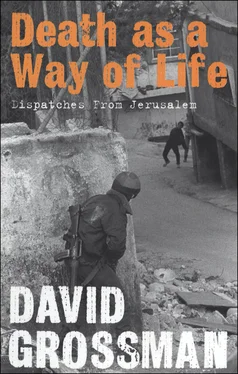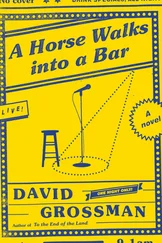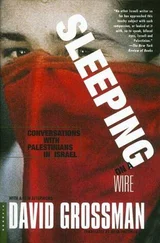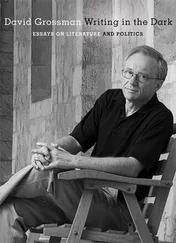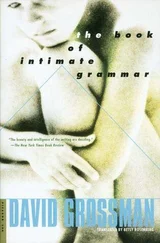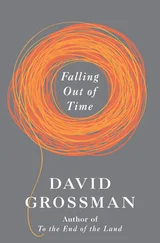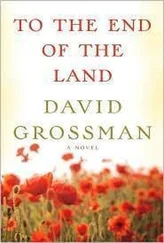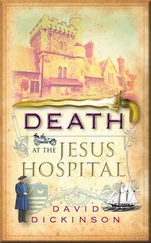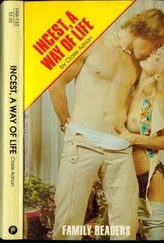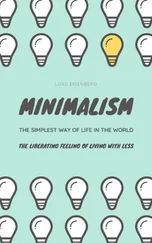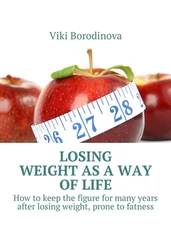David Grossman - Death as a Way of Life
Здесь есть возможность читать онлайн «David Grossman - Death as a Way of Life» весь текст электронной книги совершенно бесплатно (целиком полную версию без сокращений). В некоторых случаях можно слушать аудио, скачать через торрент в формате fb2 и присутствует краткое содержание. Год выпуска: 2013, Издательство: Bloomsbury Publishing, Жанр: Прочая документальная литература, на английском языке. Описание произведения, (предисловие) а так же отзывы посетителей доступны на портале библиотеки ЛибКат.
- Название:Death as a Way of Life
- Автор:
- Издательство:Bloomsbury Publishing
- Жанр:
- Год:2013
- ISBN:нет данных
- Рейтинг книги:5 / 5. Голосов: 1
-
Избранное:Добавить в избранное
- Отзывы:
-
Ваша оценка:
- 100
- 1
- 2
- 3
- 4
- 5
Death as a Way of Life: краткое содержание, описание и аннотация
Предлагаем к чтению аннотацию, описание, краткое содержание или предисловие (зависит от того, что написал сам автор книги «Death as a Way of Life»). Если вы не нашли необходимую информацию о книге — напишите в комментариях, мы постараемся отыскать её.
Death as a Way of Life — читать онлайн бесплатно полную книгу (весь текст) целиком
Ниже представлен текст книги, разбитый по страницам. Система сохранения места последней прочитанной страницы, позволяет с удобством читать онлайн бесплатно книгу «Death as a Way of Life», без необходимости каждый раз заново искать на чём Вы остановились. Поставьте закладку, и сможете в любой момент перейти на страницу, на которой закончили чтение.
Интервал:
Закладка:
But he wasn’t a Sabra only in his peak moments. He was no less a Sabra in his weaknesses and mistakes. An entire generation could look at him as its reflection. They could see what happened to the mythological, idealist, ideal Sabra when his life became entangled in the trivial matters of daily life, in political intrigue, in the temptations of money.
Even his physical appearance could teach us something that we didn’t know. This youthful Sabra with the handsome face and the uncombed, wavy hair turned into an adult, and then into an old man. Rabin’s very real face allowed us to sense how our ideals and hopes slowly became flesh, became real life, became real time. We walked with him, watching him, as if walking alongside ourselves, each according to his age, and we saw our own image in him.
Then, just when he was at the lowest point of his political career, he began to soar again. To my mind, in accomplishing this astounding turnaround, Rabin returned to the most profound essence of the Sabra character. He displayed an amazing capacity for renewal, and loyalty to the deepest, most manifest interest of Israel and the Jewish people. Most of all, he displayed exceptional courage. Rabin not only changed his political positions. He showed all of us, even the dubious, that we never have to be the victims of our fears, of our preconceptions, of the education we received, or of the circumstances of our lives.
Rabin prevailed over all these, and first and foremost over himself. He overcame a certain tough and unnuanced view of the world. He surmounted the exclusively military reflexes that were so vital to him — and to us — in times of war. In a relatively brief process, he almost re-created himself as a statesman, as a military man, as a man. Even if at times he was not striding with the proper determination and speed toward peace, I wonder how many of us could, at a much younger age, and with a less charged and imposing biography, identify at the right moment the opportunity, the birth of a new reality, and act with such resolve in a field of action that was both unfamiliar and not completely comprehensible.
How many of us could have been so victorious over ourselves, over the fears imprinted within us, within our natures.
II
I was driving yesterday through the Jerusalem Forest, and at one of the turns in the road, on the side, hidden behind a small clump of trees, I saw a man get out of his car and quickly peel off a black-and-red bumper sticker inscribed RABIN IS A MURDERER. What will this man say to his children today? How will he explain to them why he put the bumper sticker on his car and why he tore it off today?
As has happened so many times in history, the gunshots came at the end of a long string of violent words, of provocations and curses, and of incendiary bumper stickers. How did the speakers and cursers and street inciters not understand that at the end of every such chain of events stands a man with a gun, who will add the deadly exclamation point to all those words echoing in his ears?
Our lives in Israel are lives of ongoing violence. The country was born in war, and it has lived with war and terror and occupation. Violence was also part of the Sabra experience, but the Sabra never seems to have been able to assimilate that part of his identity. Perhaps, had more of them managed to resolve this internal contradiction, to comprehend in a profound way the internal toxification that our massive use of force brings upon us, then we might long ago have been living in a different political and social reality. Perhaps yesterday, at the climax of the magnificent and heartwarming Act III, the pistol concealed within us since Act I might not have gone off.
Yitzhak Rabin tried to introduce a profound change here, even though he had, for years, participated in that same use of violence and force. To our detriment, the violence seeped into the entire tissue of our social and private lives. The murderer is a metastasis of the violence, the hatred, the loathing, and the cruelty that we have become accustomed over the years to direct, not only against our enemies, but also against ourselves.
Sometimes it seems that nowhere else in the world are Israelis hated as much as they are here, in our own country, on our own roads, on the beach, in the city streets.
The action that Yitzhak Rabin led was meant, at its most fundamental level, to bring about the end of the violence between us and our enemies, and also our own healing. We have what I would cautiously call the Israeli disease, a constant and deadly nervous condition of hatred within.
It is now clearer than it ever was that peace is necessary for us primarily for this purpose. Peace is our only chance to live full lives here. Surely, in a harsh reality, without illusions, and with full and painful awareness of all our faces and all our scars. But to live, finally — not only to survive from disaster to disaster. The assassination on Saturday night warns us, in the most shocking way, that from now on the war for peace is a war for our chance to continue to exist, and to develop normally as a nation, as a society, and as human beings.
When Fear Overcomes Everything
March 1996
Israel experienced a particularly horrendous wave of terrorism during February and March 1996 during Shimon Peres’s brief tenure as prime minister and defense minister after Rabin’s assassination. The killing of children in costumes, celebrating the Jewish holiday of Purim in Tel Aviv was the cause of much Israeli rage. Hamas claimed the attacks were in retaliation for Israel’s liquidation of their master bomb maker, Yehia Ayache. These were the first of the suicide bombings, which were to become the archetypical terrorist attack of the years to come.
This morning, when I woke up my eleven-year-old son, he asked, “Has today’s terrorist attack already happened?” My son is scared, as are most of Israel’s citizens — during the last two weeks there have been five suicide bombings, in which more than fifty Israelis were killed and hundreds wounded. We have seen horrifying scenes of civilian slaughter of a kind we did not see in our worst wars. People have been crying out: How long will this go on? What kind of peace is this? Even Israelis who have supported the peace process so far have begun losing confidence in it, and the public opinion polls show a sharp rise in support for the political parties of the right, PERES, PERES, taunted the signs at a right-wing demonstration after the attacks, is THIS WHAT YOUR NEW MIDDLE EAST LOOKS LIKE?
True, the vision and idea seem impotent when faced with the stench of scorched flesh and the spilt blood. Fear overwhelms all other thoughts — when you walk down the street, you examine everyone you see seven times over. Any one of them might be your murderer (and, surprisingly, you discover that almost every single person — even familiar ones — appears sinister in some way). Every decision is liable to be a fateful one. Should I stop for a drink at this stand, or wait to get to the next one? Should I send my two children to school on the same bus? (And then there’s the decision over which child to send on the 7:10 and which child on the following bus.) I find myself walking down the main street where I have walked since childhood, the bustling, raucous, somewhat provincial main street of Jerusalem, with my mind ceaselessly smashing this beloved scene into little bits. I keep bidding the familiar farewell. Its impermanence elicits my compassion. Everything is so fragile — the body, routine, family, the fabric of life.
We Israelis are accustomed to living in the vicinity of death. I’ll never forget how a young couple once told me about their plans for the future: they’d get married and have three children. Not two, but three. Because if one dies, there will still be two left. This heart-wrenching way of thinking is not foreign to me. It’s the product of the unbearable lightness of death that prevails here, a way of seeing things that, in my opinion, is also characteristic of the long-suffering Palestinians. It’s precisely the disease that Yitzhak Rabin and Yasir Arafat sought to cure by turning onto the road of peace. Hamas’s suicide bombers want to keep the disease alive, and volunteer to spread it. Once, years ago, they hijacked airplanes; today they wish to hijack our future.
Читать дальшеИнтервал:
Закладка:
Похожие книги на «Death as a Way of Life»
Представляем Вашему вниманию похожие книги на «Death as a Way of Life» списком для выбора. Мы отобрали схожую по названию и смыслу литературу в надежде предоставить читателям больше вариантов отыскать новые, интересные, ещё непрочитанные произведения.
Обсуждение, отзывы о книге «Death as a Way of Life» и просто собственные мнения читателей. Оставьте ваши комментарии, напишите, что Вы думаете о произведении, его смысле или главных героях. Укажите что конкретно понравилось, а что нет, и почему Вы так считаете.
